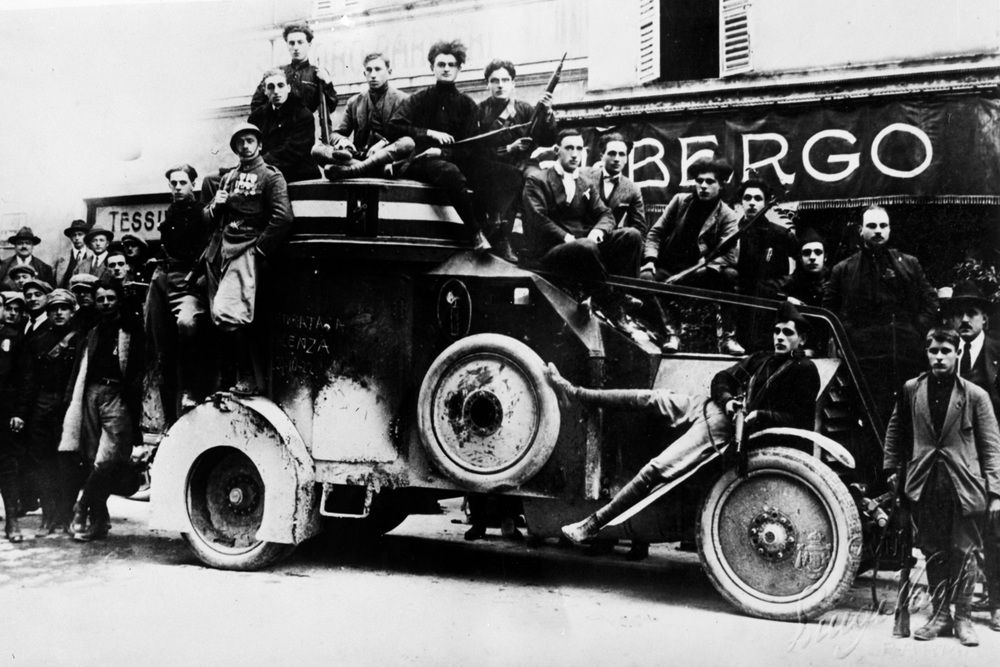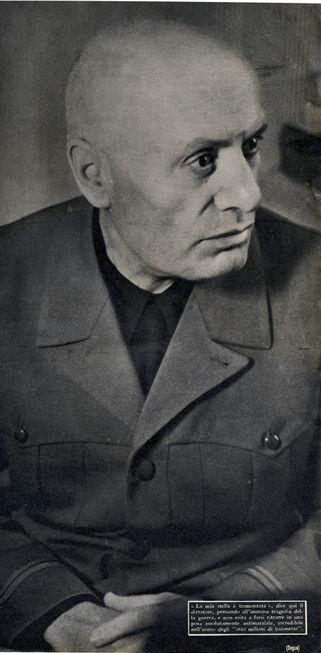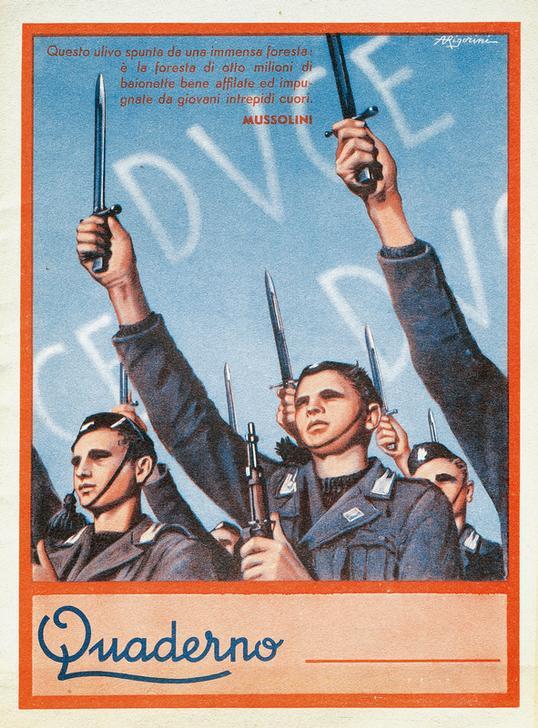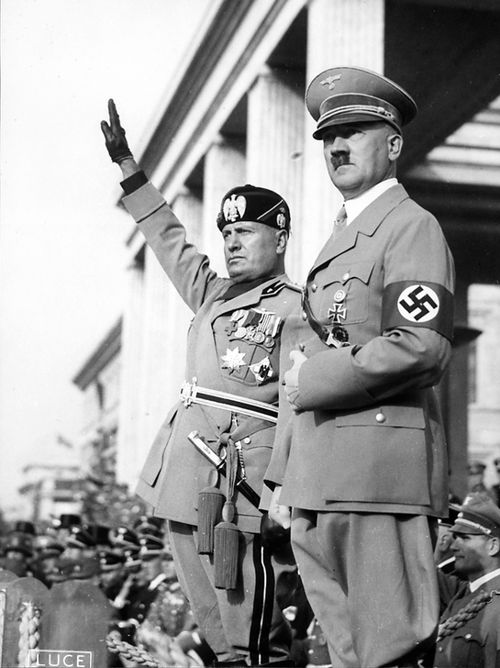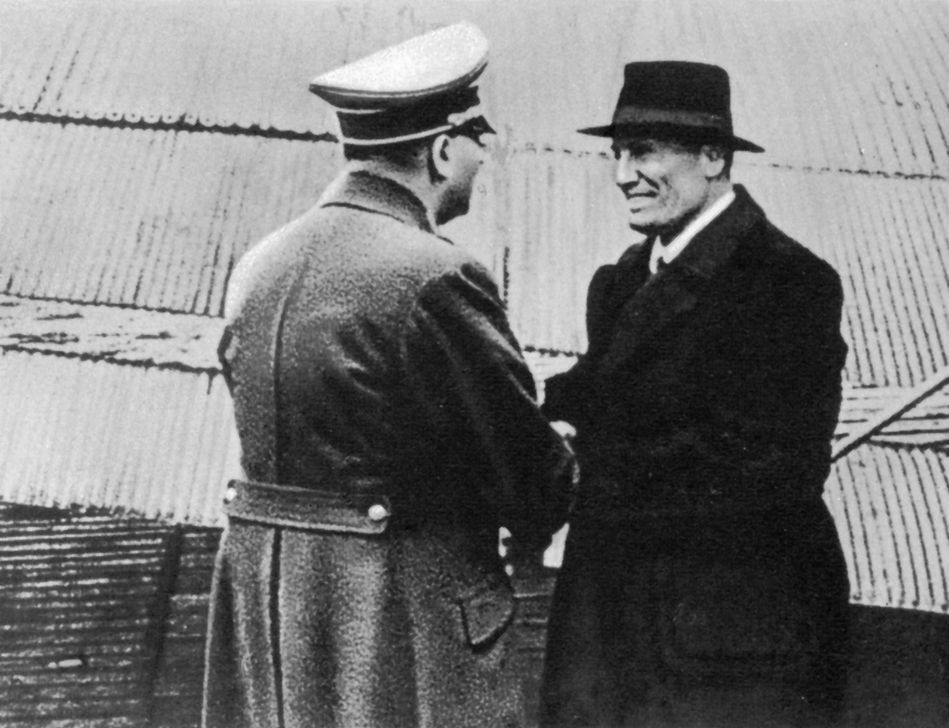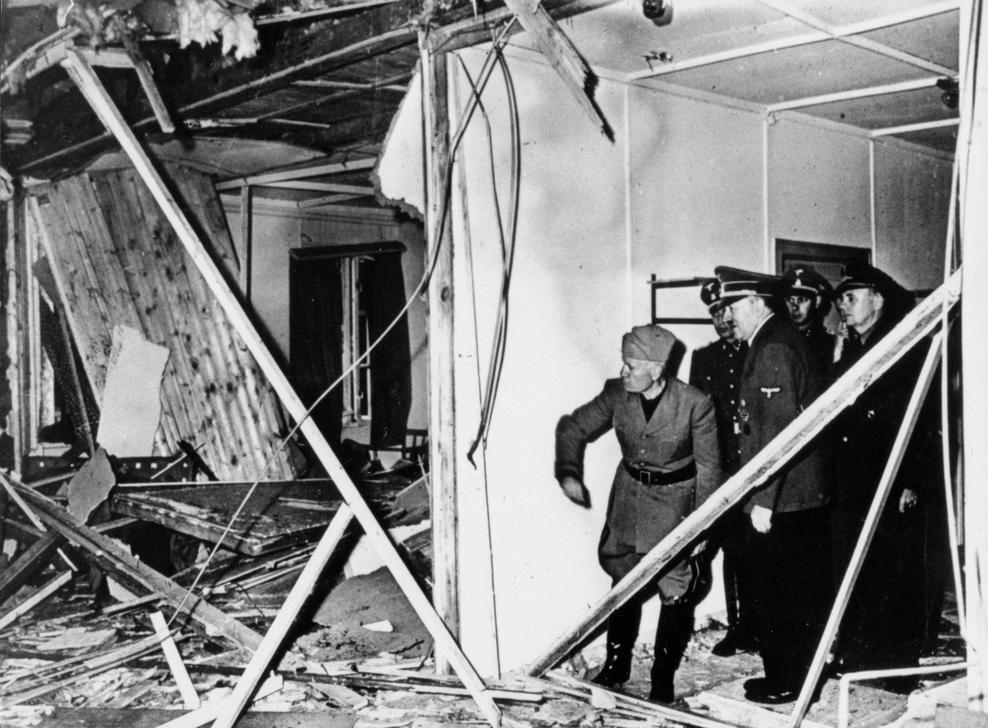March on Rome - 100 years
28 October 1922: Benito Mussolini and his fascist troops trample Italian democracy
28 February 2022

The Centenary of the March on Rome presents an opportunity to question the advent of fascism in Italy and its repercussions at an international level. We offer a wide variety of visuals: historical photos, posters, postcards, photos of fascist architecture in Italy, cinema scenes, sculptures and paintings.
Discover the iconography around the March on Rome and fascism in Italy in ten steps:
1) The March on Rome
The March on Rome was an armed demonstration organized by the National Fascist Party (PNF), led by Benito Mussolini, to assume leadership of the government in Italy. On October 28, 1922, thousands of fascists marched towards the capital, threatening to seize power through the use of violence.
The event ended on October 30, when King Victor-Emmanuel III - faced with the threat of a coup d'etat and unwilling to declare a state of siege for fear of a civil war - instructed Mussolini to form a new government.
The March on Rome was presented in the years that followed as the prologue to the "fascist revolution" and marked Year I of the fascist era.
Click here to see the March on Rome album:

2) Commemorations of the March on Rome
After Mussolini seized power, the March on Rome was commemorated every year in every city in Italy, with the obvious aim of legitimizing and consolidating the fascist regime.
Click here to see the album on the commemorations of the March on Rome:

3) Benito Mussolini - a biography in pictures
The rise, peak and decline of fascism in Italy are fundamentally linked to Benito Mussolini. Portraits throughout his life, his wife, his children, his mistresses, his places of life and death are collected in this photo gallery.
Click here to see the album on the biography of Benito Mussolini
4) The cult of Mussolini - the ubiquity of an idol
The image of Benito Mussolini played a major role in Italian fascist propaganda. The Duce was present in every city, every house, and in every aspect of life, through a deluge of images. Moreover, it was Mussolini himself who created the model for a fascist idol during his speeches and travels that he knew were photographed and filmed at all times.
Click here to see Benito Mussolini's cult album:

5) Caricatures of Mussolini
Mussolini's propaganda created a counter-current to the idealization of the figure of the Duce, in the form of caricatures - all created outside of Italy, of course.
Click here to see the album on the caricatures of Benito Mussolini

6) The fascist movement in Italy
Predating Nazism in Germany, Italian fascism was in many ways an experiment of fascist totalitarianism in Europe. For example, the indoctrination of youth in the Italian Fascist organization, the Opera Nazionale Balilla was soon taken up in Nazi Germany, with the formation of the Hitler Youth. Mass rallies around the Duce were later overtaken by huge demonstrations by the Third Reich. The great athletic displays in the stadiums - being another form of "keeping in step" with respect to military parades - also found their German counterpart later on.
Click here to see the album on the fascist movement in Italy:
7) Relations between Fascist Italy and Germany
Benito Mussolini and Adolf Hitler maintained an impression of friendship and unity, despite tensions, rivalry and attempts to display superiority throughout their political journeys. While suspicious of each other, the Duce and the Führer preferred to ally rather than openly confront each other, the Rome-Berlin Axis serving as the backbone of a fascist Europe, their common design. The two leaders went very regularly, in turn, to the allied country, for representation visits, but also to sign agreements and pacts. We offer you photos from 1934 to 1944. Towards the end of this decade, faced with the warning signs of their imminent downfall, the two dictators mutually supported each other: Hitler launched "Operation Eiche" which was to take Mussolini out of his imprisonment in the Gran Sasso in September 1943 and the Duce rushed to the Führer after the attack of July 20, 1944.
Click here to see the album on the relations between fascist Italy and Germany:
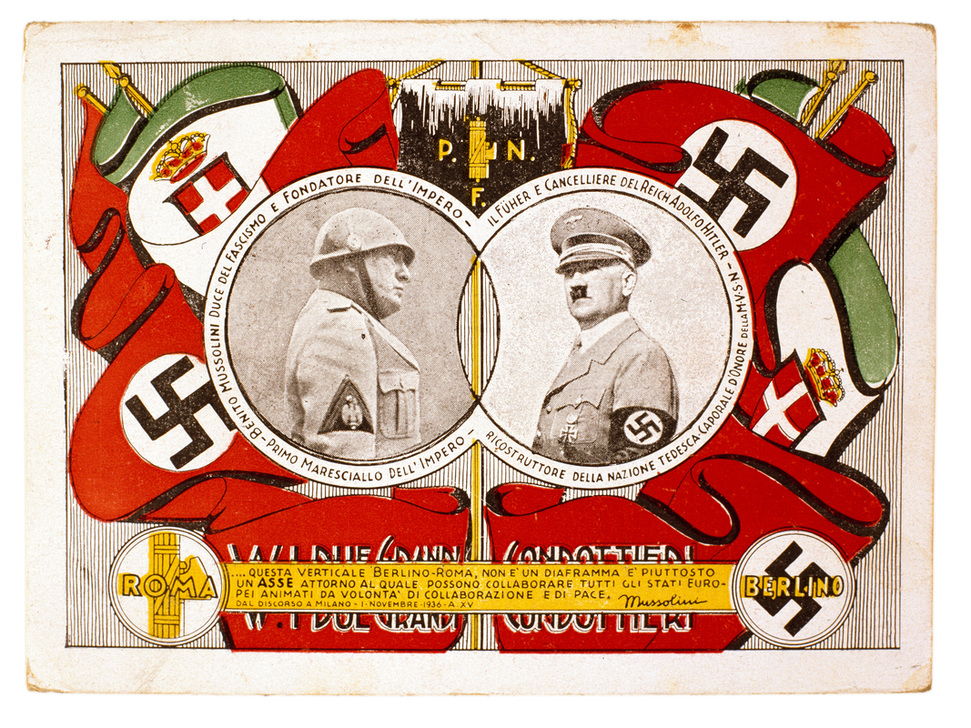
8) Italian fascist architecture
The double fascist decade in Italy generated many constructions: official buildings, stadiums, factories, houses; entire cities were designed and built where there was previously nothing. The creation of these spaces to make room for fascism was often entrusted to avant-garde architects. This architectural heritage is fairly well preserved today and, in part, appreciated for its formal qualities.
Click here to see the album on Italian fascist architecture:


9) The March on Rome and the Italian fascist era in cinema
As Charlie Chaplin was able, in 1940, to parody the rivalry between Benito Mussolini and Adolf Hitler in his film "The Great Dictator" (The Dictator), many other directors have confronted Italian fascism. In his comedy "La marcia su Roma" (The March on Rome), Dino Risi sends his two protagonists, two members of the Black Shirts as fervent as they are naive, played by Ugo Tognazzi and Vittorio Gassman, on the road which will be only one long series of disappointments. The encounter between Sophia Loren and Marcello Mastroianni in "Una giornata particolare" (A Special Day, 1977) by Ettore Scola is a masterpiece for its insightful description of the infiltration of fascism into society.
Click here to see the album on the March on Rome and the Fascist era in cinema:

10) From Futurism to Return to Order - Art in the Fascist Age
This album is not primarily intended to show the fascist art of propaganda - examples of which can be found in the Cult of Mussolini and Fascist Architecture albums. The aim here is to show the artistic currents that preceded and developed during the fascist era in Italy, in convergence with the political regime.
While Italian Futurists as a whole cannot be considered as adherents of Fascism, certain Futurist ideals such as the glorification of violence and war clearly found their approval in the Fascist political movement.
Similarly, the "Return to Order", an international artistic movement of the interwar period which advocated a return to classicism, encompassed various positions: in Italy, the return to tradition in Italian art found an echo in the return to social traditions favoured by the fascist regime.
Click here to see the album on Art in the Fascist Era :


Presentation and iconographic selection : Ulrike Haussen
Translated by akg-images London


